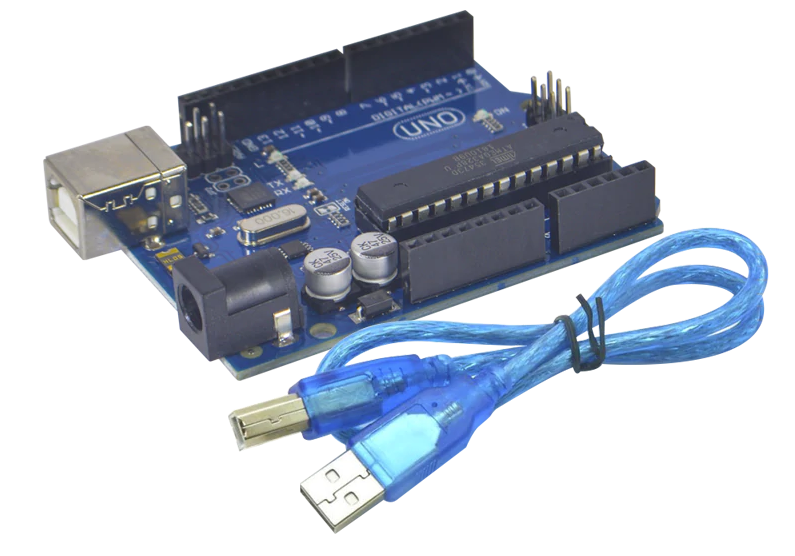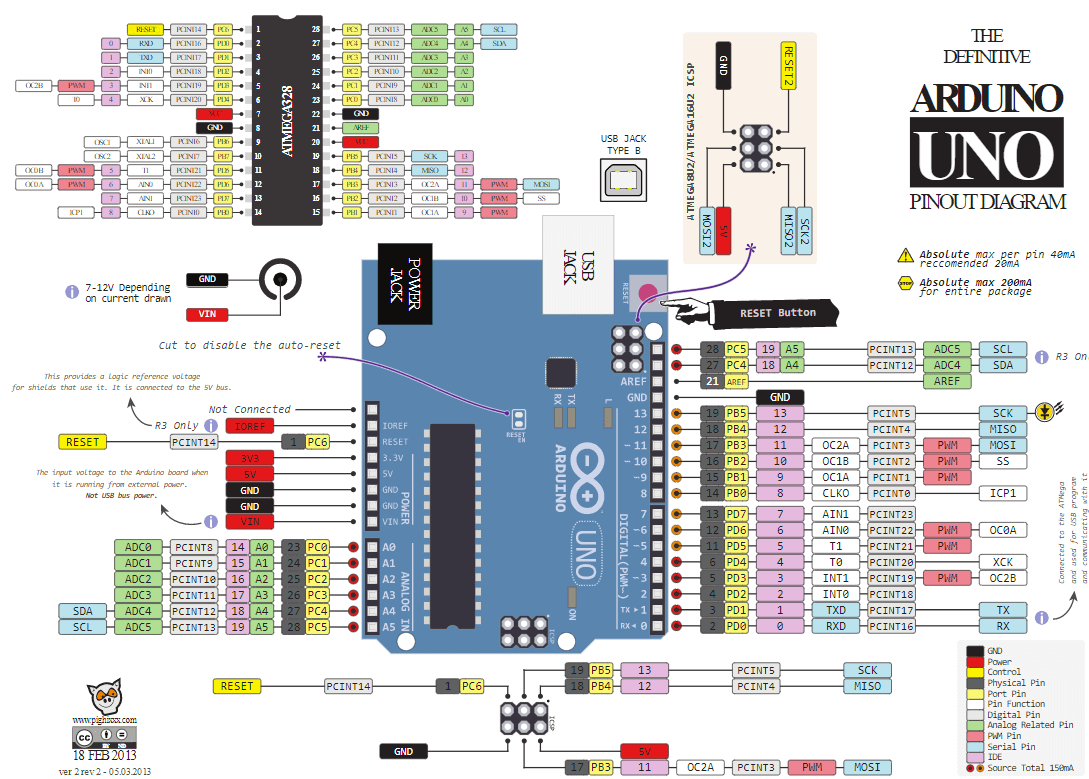
| |||
|
Uno Info
| |||

| |||
|
Uno Info
| |||
| Pinout |

| Arduino Uno Specification | |
| Microcontroller: | ATmega328P |
| Operating Voltage: | 5V |
| Input Voltage (recommended): | 7-12V |
| Inout Voltage (limit): | 6-20V |
| Digital I/O Pins: | 14 (of which 6 provide PWM output) |
| PWM Digital I/O Pins | 6 |
| Analog Input Pins | 6 |
| DC Current per I/O Pin | 20 mA |
| DC current for 3.3V Pin | 50 mA |
| Flash Memory | 32 KB (ATmega328P) of which 0.5 KB used by bootloader |
| SRAM | 2 KB (ATmega328P) |
| EEPROM | 1 KB (ATmega328P) |
| Clock Speed | 16 MHz |
| LED_BUILTIN | 13 |
| Length | 68.6 mm |
| Width | 58.4 mm |
| Weight | 25 g |